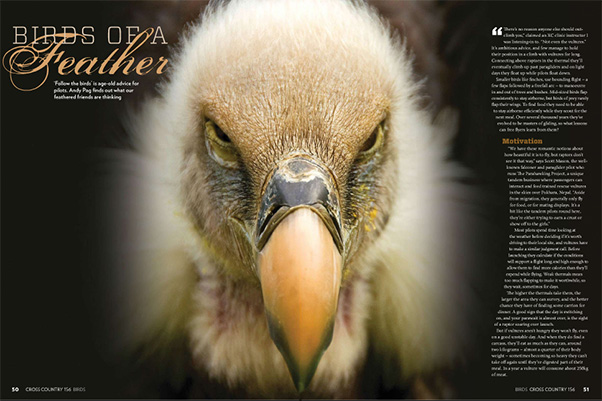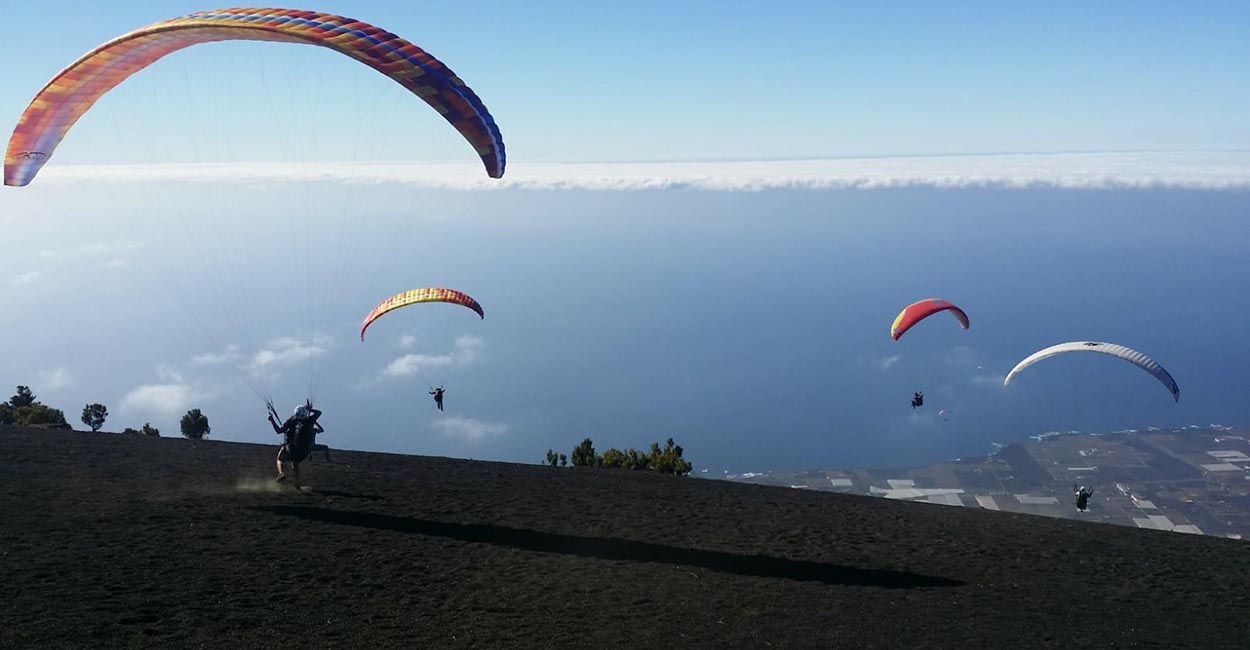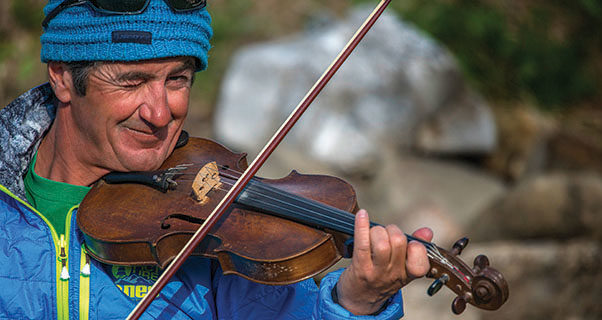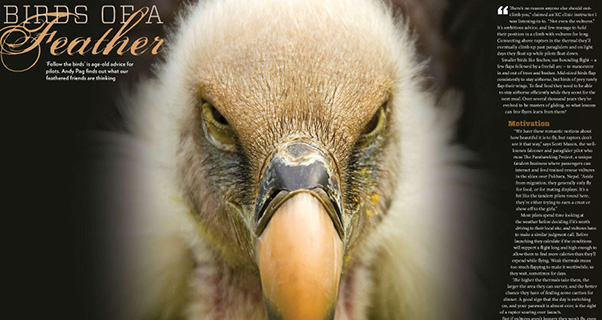In Cross Country 156 Andy Pag interviews falconers, paraglider pilots and raptor and vulture experts around the world to find out what these amazing soaring birds have to teach us hang glider and paraglider pilots…
“We have these romantic notions about how beautiful it is to fly, but raptors don’t see it that way,” says Scott Mason, the well-known falconer and paraglider pilot who runs The Parahawking Project, a unique tandem business where passengers can interact and feed trained rescue vultures in the skies over Pokhara, Nepal.
“Aside from migration, they generally only fly for food, or for mating displays. It’s a bit like the tandem pilots round here, they’re either trying to earn a crust or show off to the girls.”
Most pilots spend time looking at the weather before deciding if it’s worth driving to their local site, and vultures have to make a similar judgment call. Before launching they calculate if the conditions will support a flight long and high enough to allow them to find more calories than they’ll expend while flying. Weak thermals mean too much flapping to make it worthwhile, so they wait, sometimes for days.
The higher the thermals take them, the larger the area they can survey, and the better chance they have of finding some carrion for dinner. A good sign that the day is switching on, and your parawait is almost over, is the sight of a raptor soaring over launch.
But if vultures aren’t hungry they won’t fly, even on a good unstable day. And when they do find a carcass, they’ll eat as much as they can, around two kilograms – almost a quarter of their body weight – sometimes becoming so heavy they can’t take off again until they’ve digested part of their meal. In a year a vulture will consume about 250kg of meat.
But how do they know the conditions are working? “They have amazing eyesight,” says Mason. “While we humans can make out the shape of a tree on the ridge two miles away, vultures can see individual leaves from that distance.” Using this eyesight they can spot the effect of thermals rolling up hillsides, made visible as the air slides up slopes shaking leaves and grasses on its way. It’s a trick used by good pilots scratching low, or weighing up a leap to the next ridge. It’s perhaps no coincidence that some of the best XC pilots have better than 20/20 vision.
This is just an extract. The full article is in Cross Country 156 (Nov/Dec 2014). Subscribe here.
• Got news? Send it to us at news@xccontent.local








